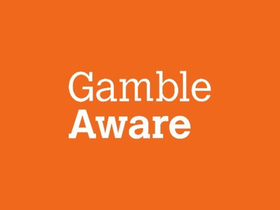Calls to Ohio’s Problem Gambling Helpline more than tripled in the first month of legal sports betting in the state.
According to Ohio for Responsible Gambling (ORG), a non-profit organization based in Cleveland, there were 1,492 calls placed to the Helpline (1-800-589-9966) in January. That was more than triple the 456 calls to the Helpline in January 2022.
ORG attributed some of the year-over-year increase in calls to a planned marketing push to raise awareness of the Helpline prior to the launch of regulated sports betting on January 1.
But in a four-page report released on March 6, the non-profit also blamed “confusion caused by the gambling industry ads regarding 'free’ money after bets are placed.”
Republican Governor Mike DeWine railed against the industry for such verbiage in their advertising shortly after the market launched.
On calls to the Helpline, “We knew the numbers were going to increase,” said Derek Longmeier, executive director of Problem Gambling Network of Ohio, a non-profit based in Columbus.
According to Longmeier, the Helpline received an average of about 48 calls per day in January 2023, up from 20 calls per day in December 2022. He added that many callers to the Helpline started gambling within the last year, and that the age of callers is getting younger — callers aged 18 to 34 years are the fastest-growing subset of callers overall.
“While Ohio’s increase in calls for help matches other states that recently legalized sports betting, it’s still a wake-up call for people to take notice,” Longmeier said.
Calls were up 135% month-over-month according to ORG, which released its report in tandem with Problem Gambling Awareness Month in March. The report also found:
- The number of calls to the Helpline increased for the sixth consecutive year
- Warm transfer line calls, where gamblers are connected to additional support services, increased 66% month-over-month
- There was a 45% month-over-month increase in the number of Helpline chats with gamblers
“Technology lets anyone bet anywhere with cell phone reception,” added Amanda Blackford, who serves as Director of the Ohio Casino Control Commission’s (OCCC) Operations and Problem Gambling Services (PGS). “The ability to place multiple bets in real-time with no safeguards can quickly lead to catastrophic losses.”
Blackford cited a 2017 study conducted by PGS that found sports bettors had the highest rates of being at risk for developing a gambling problem — 24.3% of sports gamblers were also deemed to be at the highest risk, compared to 24% of casino gamblers.
ORG launched its “Pause Before You Play” initiative three days before Ohio launched regulated sports betting. The initiative, a spinoff of its award-winning “Get Set Before You Bet” campaign, educated the public about the dangers of problem gambling and to learn techniques in how to gamble responsibly.
In its report, ORG said that there have been approximately 7,491 participants in its “Time Out Ohio” program, which allows individuals to exclude themselves from sports betting, as well as visiting the state’s land-based casinos and racinos. The program launched in 2012 and now features an online enrollment component in addition to in-person signups.
ORG said enrollment in “Time Out Ohio” was up 127% year-over-year. According to the non-profit, there are more than twice as many males in the program than females, and the majority of participants are aged 21 to 50 years.



